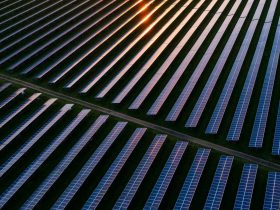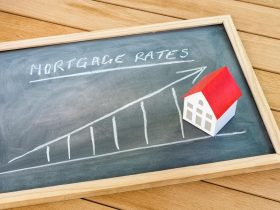Millions of student loan borrowers have to make a payment this month for the first time in over three years. The moratorium on student loan payments and interest expired over the summer after Congress passed legislation barring any further extensions. And now, the student loan payment system is creaking back to life.
But millions of borrowers may be getting billed for student loan payment amounts that are much higher than what they should be. New programs, implementation problems, and changed financial circumstances all could be contributing factors.
Here’s what student loan borrowers need to know.
Biden’s New Student Loan Plan May Lower Your Payments — If You Apply
The Biden administration recently released a new student loan repayment plan called SAVE. This is an income-driven repayment plan designed to be far more affordable than existing options. SAVE features a higher poverty exclusion limit compared to other income-driven plans; this means that a borrower can earn more money while still having a low or even a $o monthly payment. SAVE also has a more affordable repayment formula, leading to lower monthly payments for borrowers with incomes above that poverty exclusion limit. In addition, a critical interest subsidy under SAVE will waive any interest accrual that exceeds a borrower’s minimum monthly payment, preventing future interest capitalization and balance growth.
Student loan borrowers who were previously enrolled in the Revised Pay As You Earn plan shouldn’t have to do anything to lower their payments through SAVE. Since SAVE is replacing the REPAYE plan, these individuals will automatically be switched to SAVE, and their payments should be reduced accordingly, according to the Education Department.
But borrowers in other repayment plans must apply to switch to SAVE if they want those lower student loan payments. Staying in an existing plan could mean you’re paying more than you need to. For example, under Income Based Repayment, a single borrower with an Adjusted Gross Income of $50,000 would be paying over $350 per month. If that borrower were to switch to SAVE, they could lower their student loan payment to around $145 per month — a reduction of over 50%.
Loan Servicers May Have Miscalculated Student Loan Payments Under SAVE
But enrolling in the SAVE plan is not a guaranteed route to reducing student loan payments, even when that’s exactly what should be happening.
There are widespread reports of loan servicers miscalculating borrowers’ monthly payments under SAVE, resulting in some borrowers having higher payments than what they are actually entitled to under the program. Earlier this month, The New York Times reported that at least 420,000 borrowers had their monthly student loan payments miscalculated by their loan servicer during the last several months — specifically for those in the SAVE plan.
Borrowers who the Education Department identified as having their payments miscalculated have been notified, according to the Times, and placed in an administrative forbearance while the errors are corrected. Anyone who paid more than they should have will be issued a refund for the difference.
But it’s possible that the erroneous calculations are more widespread, and the Education Department is reviewing borrower accounts to try to identify further problems. Borrowers who want to be extra vigilant can double check the accuracy of their monthly student loan payments by manually running their loan, income, and family size information through the Education Department’s loan simulator.
Changed Financial Circumstances May Be Grounds For Reducing A Student Loan Payment
Student loan borrowers who were on an income-driven repayment plan prior to the Covid-19 forbearance, and have not updated their income information since then, should return to whatever monthly payment they had when the student loan system turned off in March 2020 (aside from those who were in REPAYE and are now being switched to SAVE). For borrowers who have since experienced an increase in income, this provides a bit of a buffer before they will see a corresponding increase in their monthly IDR payments. No borrower will be required to re-certify their income for an IDR plan prior to March 1, 2024, according to the Education Department.
But borrowers who have experienced a decrease in income since 2020, or some other significant change in circumstances (such as divorce), may be paying higher student loan payments than they need to. Under IDR plans, borrowers always have the right to request an early recalculation of their monthly payments due to changed circumstances. So if your income is less now than it was in 2020, and your monthly payment is tied to that outdated higher income, it might be prudent to request a payment reduction based on the current reduced income. Otherwise, you may be unnecessarily paying a higher student loan payment.
Further Student Loan Forgiveness Reading
Didn’t Get A Student Loan Forgiveness Email? 7 Possible Reasons Why
Denied Student Loan Forgiveness? Borrowers Can Now ‘Buy Back’ Credit, Within Limits
Biden’s New Student Loan Forgiveness Plan Starts To Take Shape
‘A Big Deal’: Student Loan Forgiveness Approved For 3.6 Million Borrowers
Read the full article here













Leave a Reply